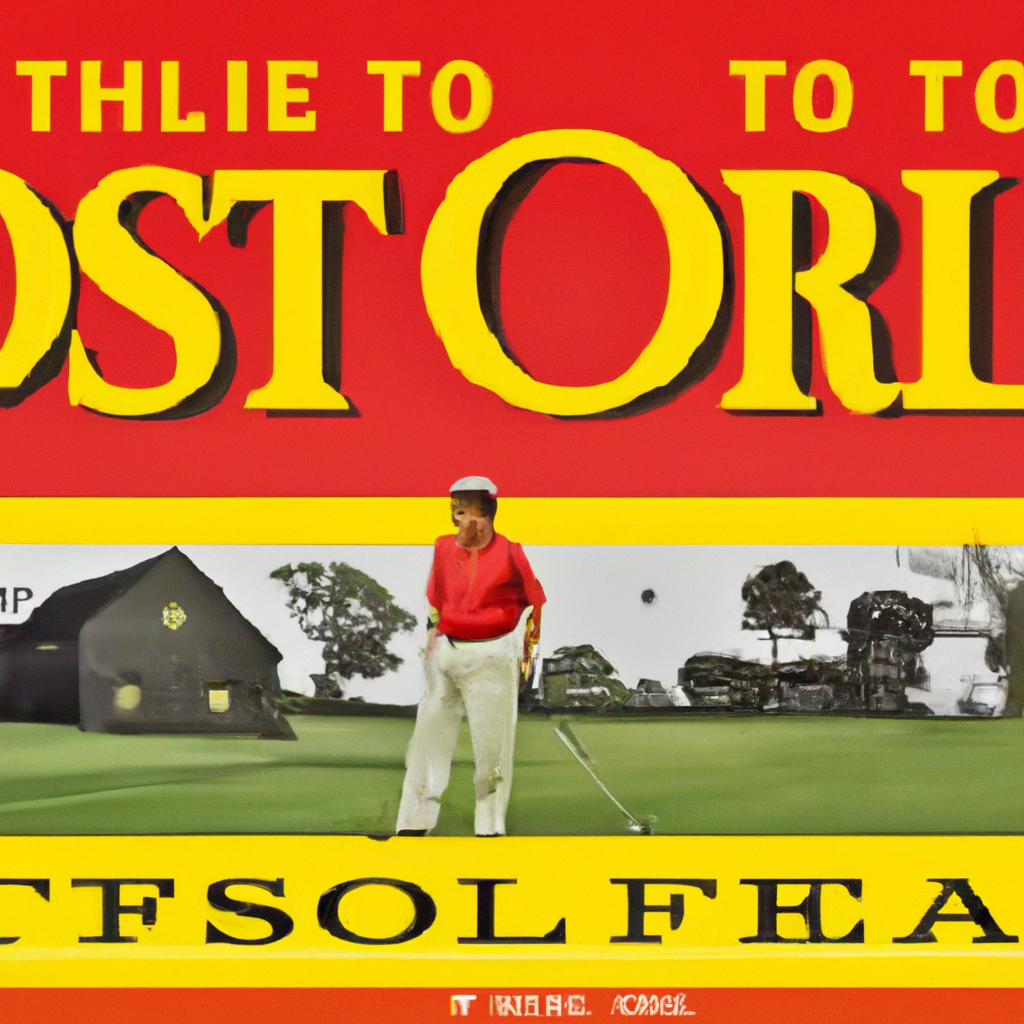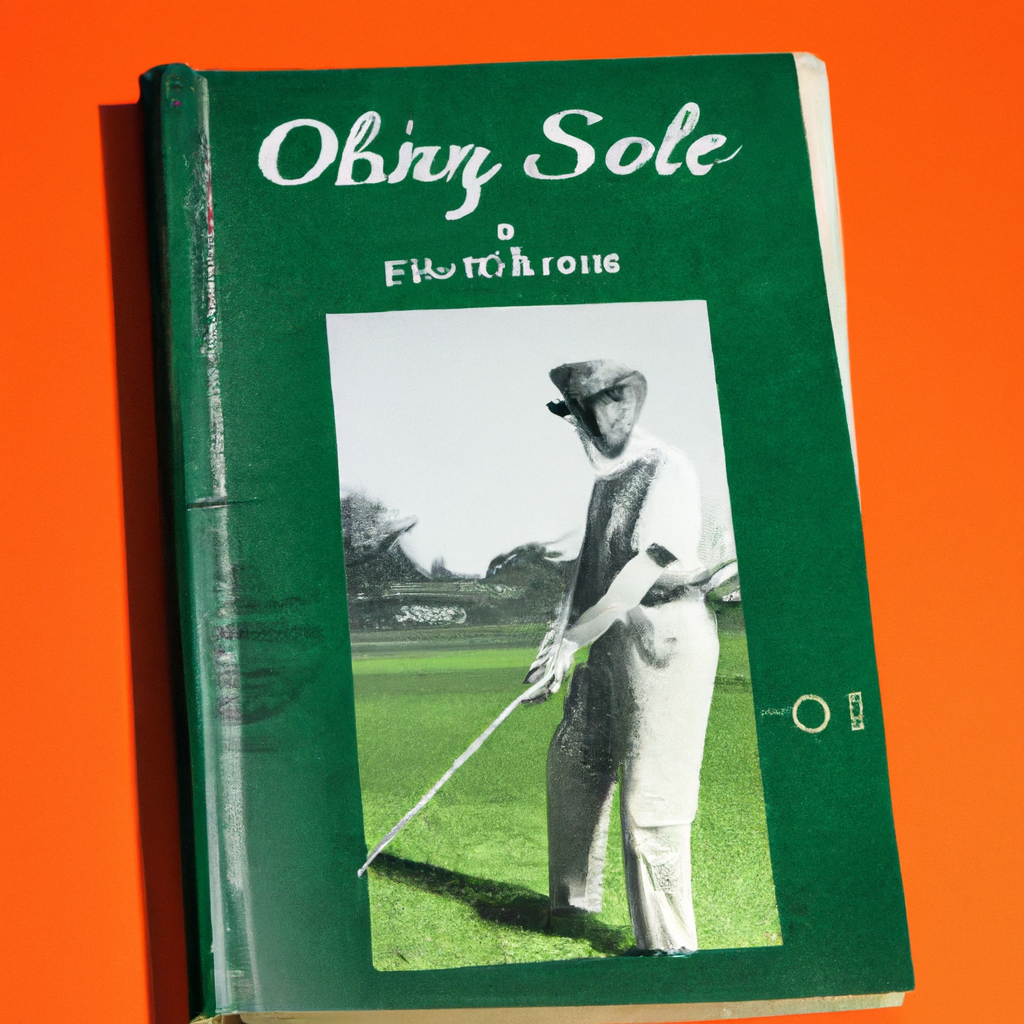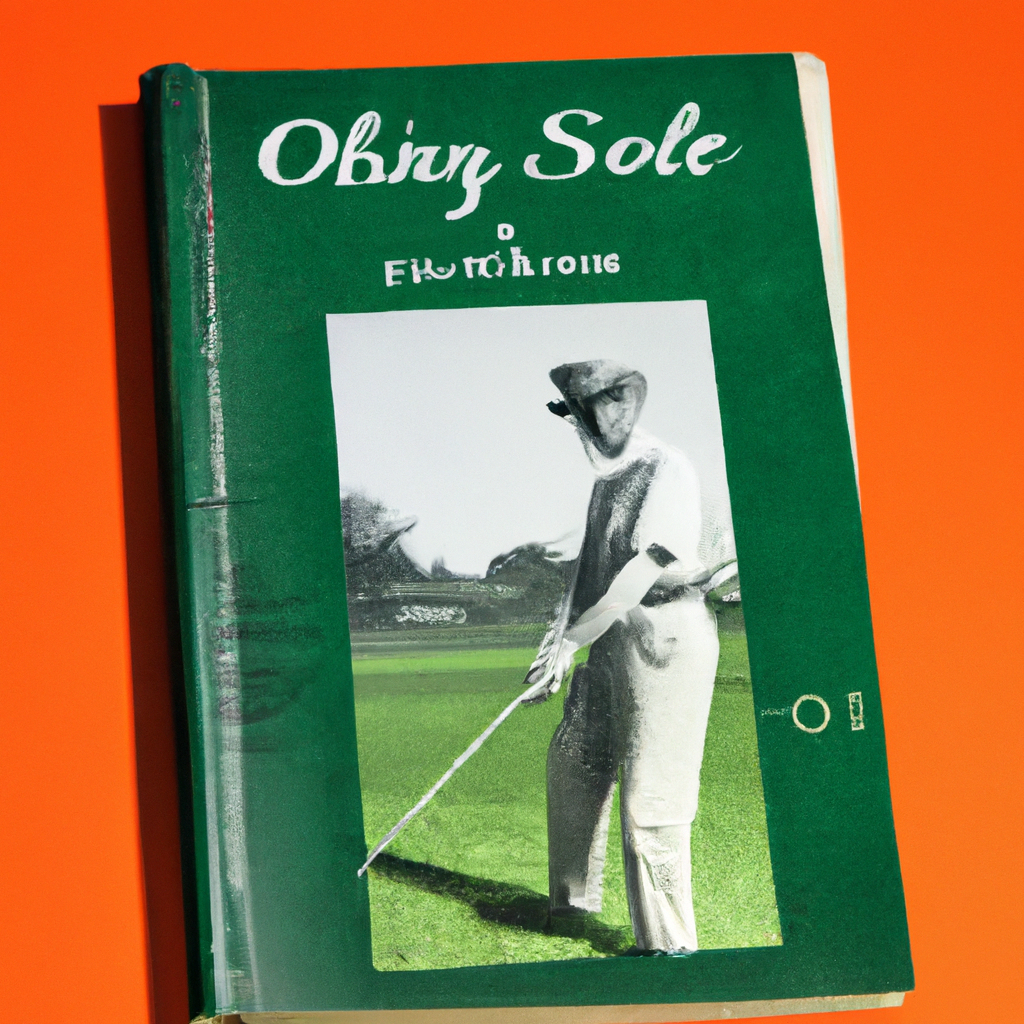Imagine yourself transported back in time to the lush landscapes of ancient Scotland. As you stroll through the picturesque meadows, a fascinating story unfolds before your eyes. This captivating tale unravels the origins of good golf, tracing its roots to a bygone era. Discover how this beloved sport, enjoyed by millions around the world today, took shape amidst the enchanting backdrop of Scotland’s rolling hills and sprawling valleys. Embark on a journey through time as we explore the historical perspective of how good golf began.

Ancient Origins of Golf
The Origins of Golf
Golf is a sport with a rich and fascinating history, dating back centuries to ancient times. While its exact origins are debated amongst historians, it is believed that golf as we know it today developed from various ball and stick games played by different cultures throughout history. These early versions of golf laid the foundation for the game we love and enjoy today.
The Roman Game of Paganica
One of the earliest ball and stick games that potentially influenced the development of golf was the Roman game of Paganica. This game was played around the first century AD and involved participants using a bent stick to hit a stuffed leather ball. Paganica was primarily played in open fields, and the objective was to hit the ball as far as possible, similar to the concept of driving in modern golf. Over time, variations of this game emerged in different regions, eventually leading to the development of distinct golf-like games.
The Chinese Game of Chuiwan
In addition to the Roman influence, golf’s origins can also be traced back to ancient China. The game of Chuiwan, played during the Northern Song Dynasty (960-1127 AD), bears striking similarities to modern golf. Chuiwan involved players using a bamboo stick to strike a leather ball into a series of targets placed along a course. This early version of golf emphasized precision and strategy, as players had to navigate obstacles and strategically land their shots. Chuiwan played a significant role in shaping the evolution of the game across different cultures.
Medieval Golf Games
Golf in Scotland
Scotland is commonly recognized as the birthplace of modern golf, with records dating back to the 15th century. The Scottish fascination with golf can be attributed to a variety of factors, including the country’s vast and rugged landscape. Early Scottish golf games were played on natural terrain, known as “links,” which provided the perfect setting for this emerging sport. The game quickly gained popularity among the Scottish nobility, who established the first golf clubs and formalized the rules of play.
The Game of Cambuca
During the medieval period, another ancestor of golf emerged in Italy. Known as Cambuca, this game involved players using a curved club (similar to a modern putter) to hit a ball into a series of holes. Cambuca featured elements of precision and skill, requiring players to accurately judge distances and navigate challenging terrains. Although Cambuca was eventually phased out, it played a vital role in the development of golf and influenced subsequent iterations of the game.
The Dutch Game of Colf
In the Netherlands, the game of Colf became popular during the Middle Ages. Colf involved using a wooden club to strike a leather ball towards a target, usually a specific point or hole in the ground. The game was played on frozen waterways during winter, and participants had to navigate obstacles like trees and natural hazards. Colf not only showcased the competitive nature of early golf-like games but also demonstrated the adaptability of the sport to different environments.
The Evolution of Golf Equipment
Early Golf Clubs
As golf continued to evolve, so did its equipment. Initially, golfers used simple and rudimentary clubs fashioned out of wood. These early clubs had a long, straight handle with a flat, rounded head. As the game gained popularity, clubmakers began experimenting with different designs to enhance performance. Elaborate clubheads with various angles were crafted, allowing golfers to hit the ball with more accuracy and power.
The Introduction of the Golf Ball
In the early days of golf, various types of balls were used, including wooden balls and balls made from animal intestines. However, it was the introduction of the featherie ball in the 17th century that revolutionized the game. The featherie ball was made by stuffing a leather pouch with wet goose feathers, shaping it into a round form, and then stitching it tightly. This new type of ball provided greater distance and control, making the game more challenging and enjoyable.
Improvements in Golf Equipment
Throughout the centuries, advancements in technology and materials significantly impacted golf equipment. The transition from featherie balls to gutta-percha balls in the mid-19th century allowed for even better performance on the golf course. Gutta-percha balls were made from the gum of the Malaysian gutta-percha tree and were easier to produce and more durable than featherie balls. The advent of metal clubheads in the 20th century and the subsequent introduction of modern materials such as graphite revolutionized golf clubs, enabling golfers to achieve greater distance and precision in their shots.

The Birth of Modern Golf
The Formation of Golf Clubs
The birth of modern golf can be attributed to the formal establishment of golf clubs during the 18th and 19th centuries. These clubs served as social and recreational centers for golf enthusiasts, providing a space for golfers to gather, compete, and share their passion for the sport. Golf clubs also played a vital role in the preservation and development of standardized rules, which were crucial for the growth and organization of the game.
The Creation of Standardized Rules
The formation of standardized rules played a pivotal role in shaping the nature of golf as we know it today. The creation of the St Andrews Society of Golfers, later known as The Royal and Ancient Golf Club of St Andrews, in 1754 marked a significant milestone in the establishment of rules and regulations. This prestigious club assumed the role of governing golf and became instrumental in shaping the evolution of the sport, setting a precedent for other clubs to follow suit.
The Role of the Royal and Ancient Golf Club
The Royal and Ancient Golf Club of St Andrews is widely regarded as one of the most influential entities in the history of golf. Founded in 1754, it became the custodian of the rules and regulations of golf and served as a guiding force for the development and global spread of the sport. The club’s dedication to maintaining the integrity and tradition of the game has helped golf maintain its unique essence and timeless appeal.
The Spread of Golf
Golf’s Expansion in Scotland
After its inception in Scotland, golf quickly spread throughout the country, becoming a beloved pastime for individuals of all social classes. Scottish golfers played a key role in carrying the sport beyond their borders, introducing and popularizing the game in other countries.
Golf in England and Ireland
The growth of golf in Scotland eventually paved the way for its expansion into England and Ireland. As the sport became more accessible and appealing, new golf clubs were established, often emulating the Scottish model. England and Ireland saw the emergence of renowned golf courses and the formation of prestigious golf clubs that gradually propelled the game into the mainstream.
The Arrival of Golf in North America
Golf made its way across the Atlantic to North America in the late 18th century. Scottish immigrants introduced the game in Canada, with the first recorded golf club, the Royal Montreal Golf Club, being formed in 1873. In the United States, golf gained popularity in the late 19th century, fueled by the formation of notable golf clubs and the organization of the first national golf championship, the U.S. Open, in 1895.
Golf in the 19th Century
The Rise of Open Championships
The 19th century witnessed the rise of open championships, which allowed both amateur and professional golfers to compete on an equal footing. The British Open, also known as The Open Championship, originated in 1860 and quickly became one of the most prestigious tournaments in the golfing world. The emergence of open championships not only showcased the talent and skill of golfers, but it also contributed to the increasing popularity of the sport among spectators.
The Introduction of Professional Golfers
As golf gained popularity, the distinction between amateur and professional golfers became more pronounced. In the late 19th century, professionals started to compete against each other in dedicated tournaments and exhibitions. Legendary golfers such as Old Tom Morris and Young Tom Morris rose to prominence during this era, captivating the public with their exceptional skills and competitive spirit. The professionalization of golf laid the foundation for the development of modern-day professional tours and the growth of the sport’s commercial appeal.
The Growth of Golf as a Social Activity
Throughout the 19th century, golf transformed from a pastime reserved for the upper-class elite to a more inclusive activity enjoyed by people from various backgrounds. The accessibility of golf courses, advances in golf equipment, and the proliferation of golf clubs contributed to the democratization of the sport. Golf became a social activity that brought people together, fostering camaraderie and creating lifelong bonds in the process.
Golf in the 20th Century
The Establishment of Major Golf Tournaments
The 20th century saw the establishment of several major golf tournaments that have since become iconic events in the sport. The Masters Tournament, founded by golfing legend Bobby Jones in 1934, became one of the four major championships in professional golf. Other prestigious tournaments, such as the U.S. Open, the British Open, and the PGA Championship, solidified their place in the golfing calendar, captivating audiences worldwide with their thrilling competition and storied traditions.
The Influence of Golf Legends
The 20th century gave rise to iconic golfers who left an indelible mark on the sport. Golf legends like Jack Nicklaus, Arnold Palmer, and Tiger Woods transcended the game, captivating fans with their extraordinary talent and charismatic personalities. These golfing icons inspired generations of players and fans, elevating the popularity of golf to unprecedented heights and cementing its status as a global sport.
The Growth of Golf Tourism
Advancements in transportation and increased leisure time in the 20th century contributed to the growth of golf tourism. Golfers began traveling to different regions and countries to experience new courses and expand their golfing horizons. Destinations like Scotland, Ireland, and the United States became sought-after golfing hotspots, attracting tourists eager to play on renowned championship courses and immerse themselves in the rich history and culture of the game.
The Modern Era of Golf
Technological Advancements in Golf Equipment
The modern era of golf has witnessed remarkable advancements in equipment technology. Golf clubs have evolved significantly, with materials such as titanium and carbon fiber revolutionizing club design and allowing players to hit the ball with greater power and precision. Similarly, golf balls have undergone rigorous development, optimizing aerodynamics, and enhancing performance. The introduction of advanced tracking and analysis systems has brought data-driven insights to golfers, enabling them to refine their technique and improve their game.
The Evolution of Golf Courses
Golf course architecture has also evolved, adapting to new challenges and demands. Course design today incorporates the natural environment and utilizes innovative techniques to create challenging yet enjoyable playing experiences. The careful placement of hazards, strategic hole layouts, and advanced irrigation systems have transformed golf courses into works of art that test golfers’ skills while preserving the beauty of the surrounding landscapes.
The Professionalization of Golf
The modern era has witnessed a surge in professionalism within the sport. Golfers now have the opportunity to pursue a career as professional athletes, competing on various international tours and pursuing lucrative sponsorship deals. The globalization of the sport has brought together talented golfers from around the world, fostering intense competition and raising the bar for excellence. The increased media coverage and the advent of online streaming have made professional golf more accessible to fans worldwide, further fueling the sport’s popularity.
Golf’s Path to Olympic Recognition
The Campaign for Golf’s Inclusion
For many years, there was a concerted effort to have golf included in the Olympic Games. The International Golf Federation (IGF) spearheaded this campaign, highlighting the global reach and popularity of the sport. Golf’s inclusion in the Olympic program was seen as an opportunity to grow the game, inspire a new generation of golfers, and provide a platform for golfers to compete on the world stage.
Golf’s Return to the Olympics in 2016
After an absence of over a century, golf made its highly anticipated return to the Olympic Games in 2016. The Olympic golf competition consisted of both men’s and women’s events, attracting top-ranked professional golfers from around the world. The inclusion of golf in the Olympics showcased the sport’s global appeal and provided a unique opportunity for golfers to compete for their respective countries, adding an extra layer of national pride to the competition.
The Impact of Olympic Status on the Sport
Golf’s reinstatement as an Olympic sport has had a significant impact on the game. The Olympic platform has helped raise the profile of golf, attracting new fans and participants to the sport. Furthermore, the Olympic competition has inspired golfers at all levels, providing a pinnacle event to aspire to and elevating the prestige of winning an Olympic medal. The ongoing presence of golf in the Olympics ensures that the sport remains relevant and continues to captivate audiences worldwide.
Conclusion
As we reflect on the ancient origins, evolution, and spread of golf, it becomes evident that the game has truly stood the test of time. From its humble beginnings to its current global status, golf has captivated and united people across cultures and generations. The rich history and traditions surrounding golf have shaped the sport into what it is today, and its future seems bright and promising. Whether you’re a seasoned golfer or new to the game, cherish the legacy of golf and continue to enjoy the timeless pursuit of hitting those perfect shots on the fairways and greens.



